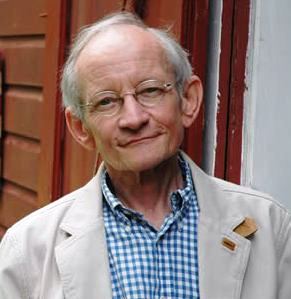
Reading Ted Kooser’s poem “New Moon” got me thinking about when I find the moon most beautiful. I have to say, I don’t think anything tops a brightly-lit full moon that almost makes it seem like it’s not even nighttime; amidst a vast, dark sky, it is still capable of shedding powerful light on everything below it. But I have to agree with Kooser, that there is a mysterious beauty to a new moon. Kooser’s poem centers on the narrator’s fascination with the new moon, and how it inspires him to do a better job of bearing the burden of sorrow and not showing it. While this is a sentiment I don’t necessarily agree with — after all, it’s healthy to express your emotions — the piece still sends a message that hits home for all of us:
How much it must bear on its back,
a great ball of blue shadow,
yet somehow it shines, keeps up
an appearance. For hours tonight,
I walk beneath it, learning.
I want to be better at carrying sorrow.
If my face is a mask, formed over
the shadows that fill me,
may I smile on the world like the moon.
A new moon is dark, since during this phase it lies between the earth and the sun, with the sun lighting its back. This is what the poet references when he writes of the moon having to “bear” (1) a heavy load on “its back” (1). To everything below on the planet Earth, the moon appears to be nothing more than “a great…shadow” (2), but what we don’t see is what is happening behind the moon. One can still make out the moon, it’s just less visible, and that’s why Kooser writes, “yet somehow it shines, keeps up/an appearance” (3-4). The moon may wish to simply rest in darkness, to have the night off, but because of the circumstances, it still must “shine[].” I think this is comparable to the way individuals that are grieving feel that they must put on a happy face, even though they are in pain.
The narrator of Kooser’s poem has been in this situation himself, which is why the moon so intrigues him. He spends “hours” (4) of his time simply “walk[ing] beneath it” (5). He wants to study it so that perhaps he can imitate it; he wants to “learn[]” (5) its ways. The narrator blatantly states, “I want to be better at carrying sorrow” (6). He longs to have control over himself, over his emotions. He doesn’t want to make a big display out of his feelings, out of the “shadows” (8) that he has within him. Rather, he wishes to use his face as “a mask” (7) so that he doesn’t have to be transparent. And while I can’t decide whether he wants to use this skill to maintain a steady state or to avoid having to face his grief, his overall desire is a good one: “may I smile on the world like the moon” (9). We’ve all wanted to run and hide from our feelings at one point or another, it’s just that the narrator of Kooser’s poem is more open about it. And even if the narrator wants to run away now, it’s true that time heals all wounds. Maybe the next time there is a new moon, the narrator will feel differently.
*Ted Kooser Photo Credit: Denise Low Postings
Related Reading:
- Learn more about the poet
- “Keeping Promises” (SevenPonds)

 “New Moon” by Ted Kooser
“New Moon” by Ted Kooser



 “As Tears Go By” by Marianne Faithfull
“As Tears Go By” by Marianne Faithfull
 “The Sea” by John Banville
“The Sea” by John Banville
 Funeral Favors Offer Visitors a Tangible Memento
Funeral Favors Offer Visitors a Tangible Memento















